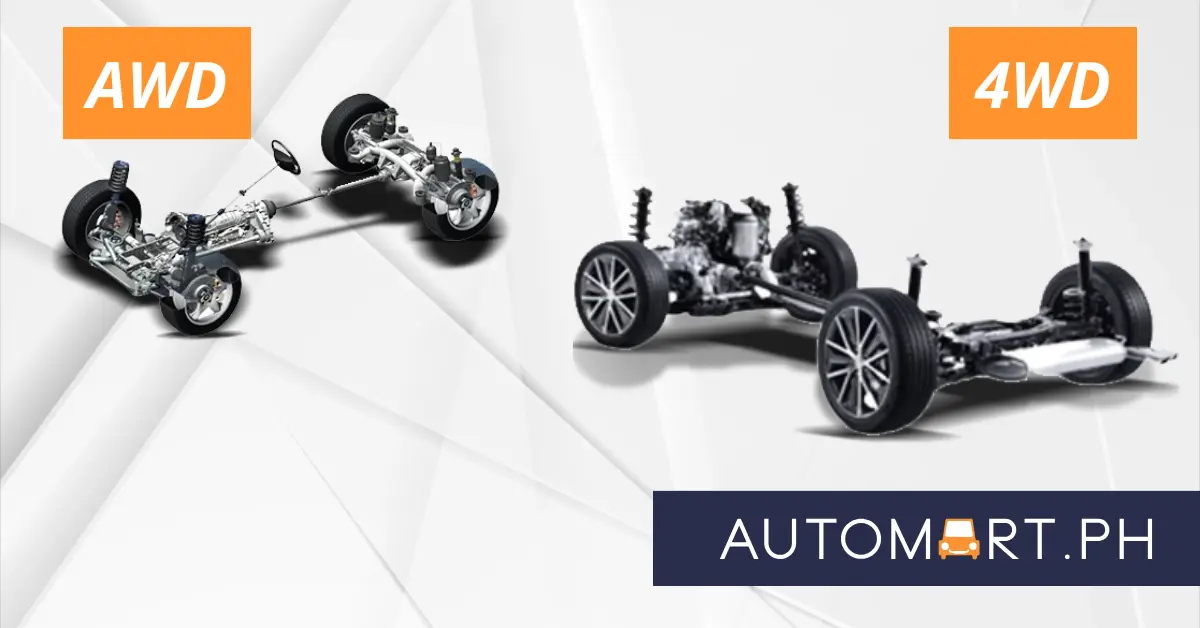
Defining Terms: AWD vs. 4WD
Updated on December 18 2025
You’ve probably heard the terms four-wheel drive (4WD) and all-wheel drive (AWD) before. This is especially true when looking at an SUV. But did you know that these two drivetrains are different and each one serves a different purpose?
What’s so different about them?
Yes, AWD is different from 4WD. Unfortunately, many people who use the terms loosely tend to interchange or even confuse the two systems.
To avoid this, let’s define what each one is:
What is All-Wheel Drive (AWD)?
This is a system that employs all four wheels to provide traction on any road surface. It is geared more towards safety, specifically on slippery or wet surfaces like rain or ice. Moreover, it can operate efficiently during high speed driving, providing added grip when accelerating from a standstill or during high speed cornering. Under normal conditions, power is sent to either the front or rear wheels. The system engages all-wheel traction when slippage or loss of traction is detected, thus offering better fuel efficiency.
What is Four-Wheel Drive (4WD)?
This system is designed primarily for better off-road traction on mud, sand, or unpaved surfaces. This one often utilizes a low-range transfer case, and/or a center differential. These serve up better low speed or crawling ability over tricky surfaces. Here, drivers can engage the system via a lever or dial (as in most new vehicles).
What are the advantages of AWD and 4WD?
As mentioned above, each of these systems give added traction on various road surfaces. AWD is best used on tarmac or normal roads, especially during rainy or snowy weather. Think of it as two heads are better than one (or in this case, four driving wheels are better than two).
Four-wheel drive systems, on the other hand, are ideal when going off-road. This means treading loose earth at low speeds. You can climb a mountain with this one, which is not exactly the case with AWD. On the flipside, you can tackle a set of twisty bits with AWD, which may not go well with your 4WD-equipped SUV.
Which system is for me?
Subaru and Audi are the best examples of AWD-equipped offerings. These cars are for those folks who love performance driving, whether on the expressway or out on their favorite mountain roads.

The Toyota Land Cruiser, Mitsubishi Pajero, and Ford Ranger--these are some of the rigs that utilize 4WD. They are for those folks who love going out on trails to their favorite campsite or mountain hideaway.

So should you go for a vehicle with either AWD or 4WD? It really depends on your driving habits and lifestyle. If you frequent the trails, then 4WD is definitely the way to go. As for AWD, it really depends if you want that extra peace of mind.
So, which one suits your driving and lifestyle?